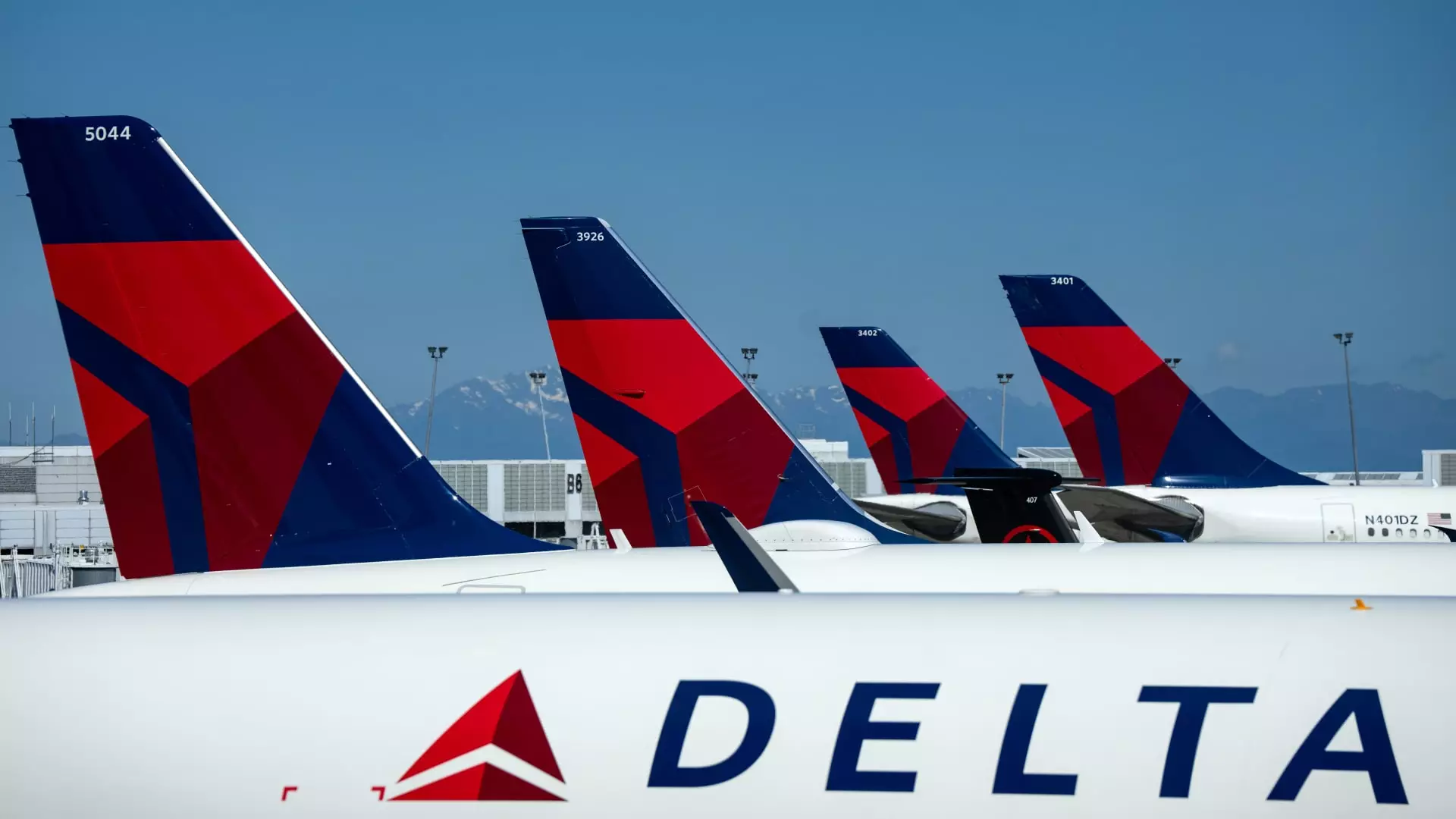In recent months, the airline industry has seen significant fluctuations in its financial performance, particularly as it navigates the complexities of post-pandemic travel. As we move toward the end of summer, reports indicate that airlines are witnessing improved unit revenues, suggesting that travelers may be facing increased ticket prices in the forthcoming months. A notable example is Alaska Airlines, which has recently revised its profit forecast for the third quarter dramatically. The airline now expects earnings of between $2.15 to $2.25 per share, a sharp increase from its earlier estimate of a maximum of $1.60 per share. This uptick in forecasts is underscored by an anticipated 2% rise in unit revenue—a significant adjustment from previous projections that indicated stasis or only marginal positive growth compared to last year.
Delta Air Lines has been proactive in reporting a positive outlook for its domestic and trans-Atlantic revenue in September, even if the gains are tempered by setbacks caused by a recent operational outage involving CrowdStrike. Initially forecasting a 4% increase in revenue for the quarter, Delta has adjusted this to a more conservative 1% due to the significant disruption that resulted in the cancellation of approximately 7,000 flights. This incident underscores the interconnected nature of the airline industry; while Delta faced struggles, Alaska Airlines capitalized on the situation, indicating that the disruptions disproportionately affected Delta’s customer base.
Despite Delta experiencing short-term setbacks, Glen Hauenstein, Delta’s president, noted at a recent Morgan Stanley conference that the outage hasn’t had a lasting negative impact on passenger bookings. This insight sheds light on the resilience of consumer demand for air travel; even amid systemic issues, travelers appear eager to continue flying, albeit at potentially elevated prices.
The broader implications of these trends can be gleaned from recent economic indicators. A U.S. inflation report revealed an increase of 3.9% in airfare prices during August, marking an end to a five-month streak of declining rates. This raises vital questions about pricing strategies and how airline companies will position themselves to navigate inflationary pressures while satisfying customer demands for affordability. Frontier Airlines, for example, has adjusted its previous expectations and now anticipates breaking even this quarter, a notable shift from earlier forecasts that projected losses of up to 6%.
The variable responses from different airlines suggest an industry in flux, with budget carriers like Frontier adjusting negatively while full-service airlines such as JetBlue are finding new opportunities to boost revenues through heightened demand and accommodating customers affected by recent cancellations. This trend hints at a larger strategy within the industry to re-engage travelers by leaning into the more lucrative aspects of customer service and operational efficiency.
In an attempted response to a shifting market, airlines of all stripes—be it full-service giants like United Airlines or budget-friendly carriers—are actively courting higher-spending travelers. Strategies include enhancing in-flight experiences, improving loyalty programs, and even refining spaces in cabins. For instance, United’s CFO, Mike Leskinen, outlined his airline’s commitment to a premium offering by enhancing food service and cabin amenities, highlighting the competitive nature of the sector.
However, the focus on premium products raises questions about how airlines will balance their appeal to higher-spending consumers with the need to attract a broader base of travelers, especially during economically challenging periods when discretionary spending may wane. Additionally, this shift comes against a backdrop of hiring slowdowns impacting operation dynamics across the industry. With aircraft deliveries delayed and overall demand tapering after an initial post-pandemic surge, companies are cautiously revising their growth strategies.
As airlines navigate these complex challenges, the current landscape presents a blend of opportunities and caution. Consumer behavior remains resilient, but the financial landscape is nuanced and subject to rapid change. The industry’s response to inflation, operational disruptions, and evolving traveler expectations will undoubtedly shape its trajectory in the months ahead. For travelers, this means being prepared for fluctuating prices and the reality of an evolving airline experience marked by both enhancements and potential inconveniences. The coming months will be critical as airlines seek to find equilibrium in this transformed environment.


Leave a Reply